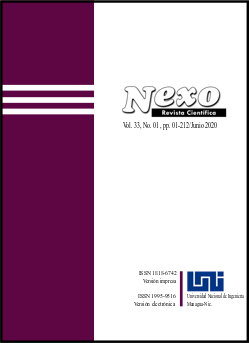Study of dynamic reaction of tubulins in microtubules. A qm/mm simulation
DOI:
https://doi.org/10.5377/nexo.v33i01.10043Keywords:
Tubulin, Microtubules, Monte Carlo SimulationAbstract
In this model one-dimensional microtubule is fixed at one of the two and simulated while the opposite end is allowed for growing in random situation. By this study at each step one tubulin has been added to the length for growing microtubule length. Computationally this can be done through generating a uniform random number between (0, 1). Microtubules are demonstrated as straight macromolecules consist of the linear chains of tubulin subunits in the length. QM/MM simulation has been applied to study dynamic instability of the microtubule length. It has been calculated a correct dimension around 10-6 meter of microtubules length consist of around 1650 tubulin dimers. Microtubule growth rate is related to the soluble tubulin dimer concentration and for all results shown here, simulation of any single condition was run 5–10 times.
Downloads
Downloads
Published
How to Cite
Issue
Section
License
Copyright (c) 2020 Array

This work is licensed under a Creative Commons Attribution 4.0 International License.
The authors who publish in Nexo Scientific Journal agree to the following terms:
- Authors retain the copyright and grant the journal the right of the first publication under the license Creative Commons Attribution License https://creativecommons.org/licenses/by/3.0/, which allows others to share the work with a recognition of the authorship of the work and the initial publication in Nexo Scientific Journal.
- Authors may separately establish additional agreements for the non-exclusive distribution of the version of the work published in the journal (for example, in an institutional repository or a book), with the recognition of the initial publication in Nexo Scientific Journal.
- Authors are allowed and encouraged to disseminate their works electronically (for example, in institutional repositories or in their own website) before and during the submission process, as it can lead to productive exchanges, as well as earlier and greater citation of published works.











